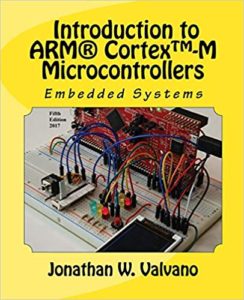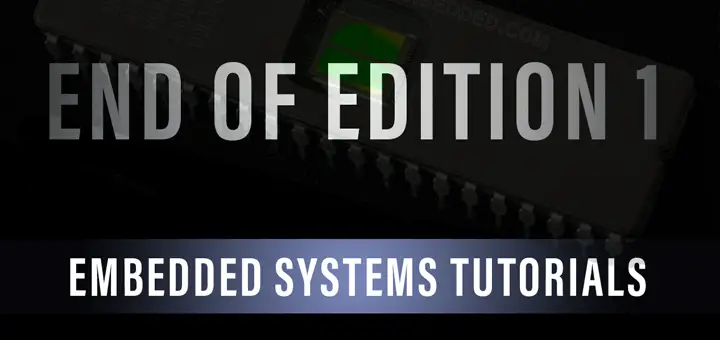| Previous Tutorial | End of The 1st Edition | Next Tutorial | |||||
| Concluding The 1st Edition Of Embedded Systems Tutorials (With PIC MCUs) | |||||||
Congratulations to everyone who have been following my embedded systems tutorials up to this point. Up till now, you’ve approached reading ~100k words of tutorials. That’s a lot of information indeed. You should have also completed +20 practical LABs. And have built your own firmware drivers for various modules as well as interfacing some sensors.
In this post, i’ll conclude everything we’ve done up till this point. Then, I’ll state the roadmap for the 2nd edition of this series of tutorials, what’s going to change, what I’m going to publish, and what you need to learn next. So, bare with me till the end!
[toc]
What We’ve Done So Far
The First Edition of “Embedded Systems Tutorials” series had a couple of goals that are, hopefully, met in the meantime. First of which is to introduce the readers to the fundamentals of embedded systems on both sides firmware & hardware. The main target was to get as much information about the underlying fundamentals as possible. That’s why there were only 1,2, or 3 practical LABs after introducing each hardware module (e.g. Timers, CCP, UART, SPI, etc).
At this point, after completing the last 21 tutorials, we should have almost completed everything in the following checklist of goals.











What’s Next?
The orientation of my website is to provide both informative tutorials in a systematic manner and also personal thoughts about technical topics. The ultimate goal is to publish as much useful content as I can. That’s why I’m going to start publishing tutorials about electronics which every embedded systems enthusiast needs to know. Alongside the 2nd edition of this “Embedded Systems Tutorials” series.
The 2nd Edition Will Be Shooting For The Following Targets







After completing the first edition, I’ve already received a tremendous amount of kind emails, donations, and love of you guys. That’s why I’m working on this 2nd edition. And we can take it a little bit further with your support.
Perspective on The Electronics Tutorials
These tutorials are going to be published on a regular basis with no specific order. Geared towards all electronics enthusiasts. As well as embedded systems engineers those who are willing to get more information about hardware electronics stuff. I hope you find it helpful and enjoy it.
What You Should Do Next
The main reason for choosing an old PIC MCU as a hardware platform to practice all the tutorials in the “1st Edition” was the availability of simulation tools that can help you build, run, and debug your applications with the minimum overhead of dealing with physical hardware stuff. However, it’s not the way to go thereafter. It was a newbie-friendly introductory way to get yourself familiar with the process.
I’ll do my best in crafting the tutorials of the 2nd edition of this series. But all in all, there are many tasks for you to do. And numerous skills you need to sharpen, so go through the following checklist to find out what you’ll have to learn next






There is no silver bullet. There is no single course, book, or website to give you all the information you need to be “Good” at something.
Take the time and the effort to dig deep into documents (like datasheets, app notes, etc). Deep google the technical forums to find real “Treasures” of information here and there. There are generous experienced people in our community who take the time to post informative comments. So make sure you keep learning from whatever resource you come across. And never wait for the ultimate course, book, or whatever to help you, Because it doesn’t and will never exist.
Recommended Resources
I highly recommend only reading the datasheet for developing MCU-Based applications. Nobody can tell you as much as the original manufacturers of these devices. The same goes for all electronics, sensors, and modules.
To learn embedded systems, computer architecture, c-programming, and electronics, I highly recommend the following textbooks.
 |
 |
 |
 |
 |
 |
| Previous Tutorial | End of Edition 1 | Next Tutorial | |||||

